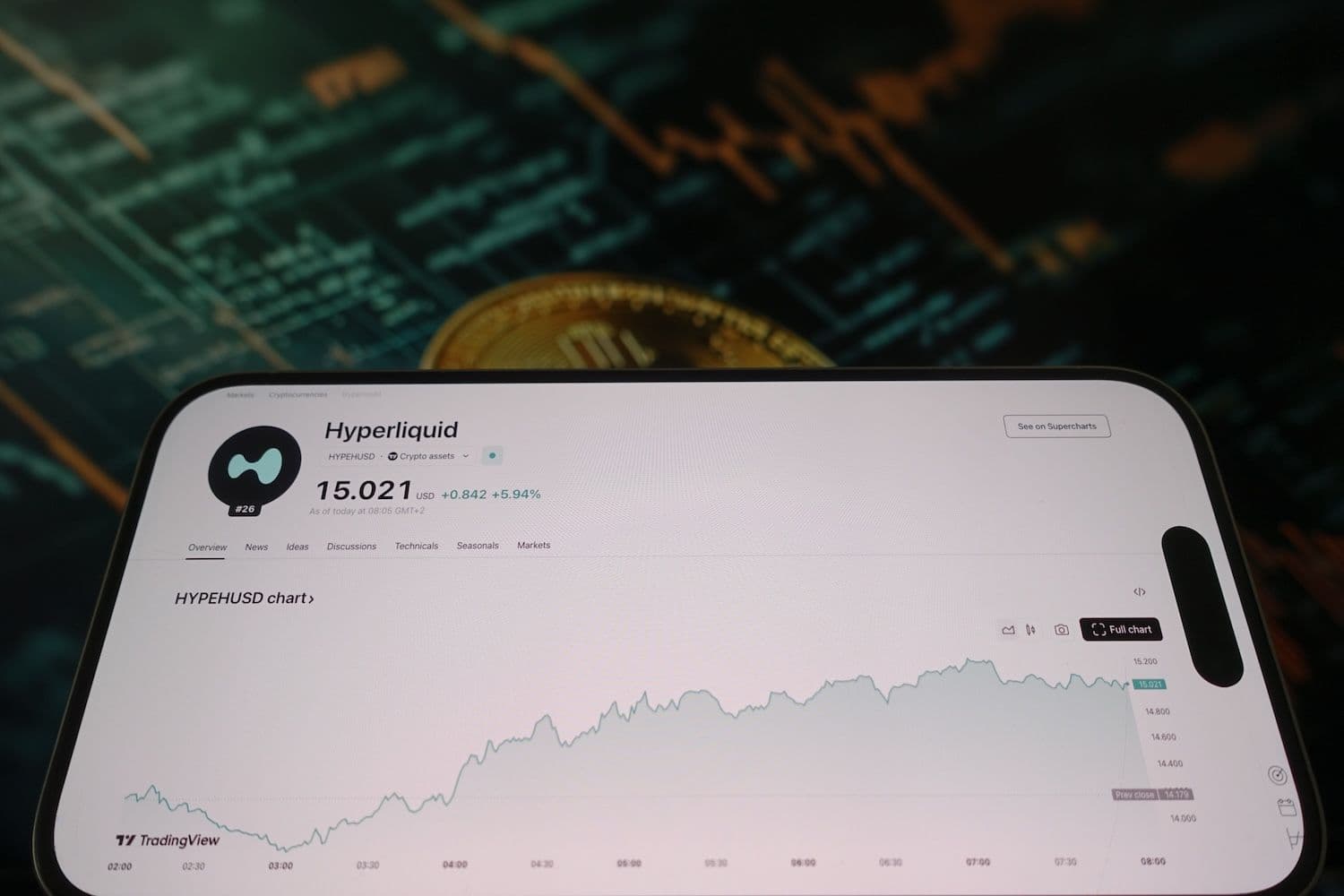Validators on the Hyperliquid decentralized exchange will vote Sept. 14 to determine which company will issue the platform's proposed stablecoin, USDH, in a governance battle that could reshape control of $5.5 billion in digital assets. The decision has drawn fierce opposition from community members who warn that awarding the contract to payment giant Stripe would threaten the platform's economic independence.
What to Know:
- Hyperliquid controls nearly 80% of the decentralized finance derivatives market and plans to replace $5.5 billion of USDC with its own USDH stablecoin
- Major bidders include Paxos, Frax, and a coalition led by Agora and MoonPay, with Stripe's proposal drawing the strongest community opposition
- The winner could generate hundreds of millions in revenue from yields on U.S. Treasury investments backing the stablecoin
Industry Giants Vie for Lucrative Contract
The competition has attracted some of the biggest names in cryptocurrency infrastructure. Paxos, drawing on its decade-long track record as a regulated stablecoin issuer, has proposed directing 95% of reserve earnings toward buybacks of Hyperliquid's native HYPE token. The company's existing partnerships with major exchanges like Binance give it credibility in the space.
Frax has positioned itself as the community-friendly option. The protocol offered to pass through 100% of Treasury yields directly to users with no fee structure, marketing this as a "community-first" model that prioritizes user benefits over corporate profits.
Agora leads a coalition that includes payment processor MoonPay, emphasizing neutrality and platform alignment. Their proposal commits 100% of net revenue to either HYPE token buybacks or Hyperliquid's development fund, with no competing business interests that might conflict with the platform's growth.
Stripe Proposal Draws Sharp Criticism
The most controversial bid comes from a coalition tied to Stripe's Bridge platform. Critics argue that Stripe's broader blockchain ambitions create fundamental conflicts of interest that could harm Hyperliquid's long-term independence.
"If Hyperliquid relinquishes their canonical stablecoin to Stripe, a vertically integrated issuer with clear conflicts, what are we even doing?" said Nick van Eck, CEO of Agora. His concerns center on Stripe's development of Tempo, its own blockchain network, and its acquisition of wallet infrastructure company Privy.
MoonPay President Keith Grossman took a more direct approach in criticizing the Stripe proposal. "USDH deserves scale, credibility and alignment – not BS capture," Grossman said, highlighting his company's broader licensing and user base compared to Stripe's Bridge platform.
The criticism reflects deeper concerns about centralization in the cryptocurrency industry. Community members worry that allowing a traditional payments company with competing blockchain interests to control Hyperliquid's monetary infrastructure could compromise the platform's decentralized ethos.
High Stakes and Market Dynamics
Hyperliquid's dominance in decentralized derivatives trading makes this contract particularly valuable. The platform commands nearly 80% market share in DeFi derivatives, with USDC currently representing 95% of its stablecoin supply at $5.5 billion total value.
The winning bidder will earn revenue from investing stablecoin reserves in U.S.
Treasury securities. With current yields above 4%, this could generate hundreds of millions in annual income, making the contract one of the most lucrative in the stablecoin industry. Additional complexity comes from potential new entrants. Ethena's USDe, another major stablecoin protocol, has hinted at submitting a last-minute proposal before the Sept. 10 deadline, which could further fragment the vote among validators.
Understanding Stablecoin Economics
Stablecoins are cryptocurrency tokens designed to maintain a steady value, typically pegged to the U.S. dollar. Issuers typically back these tokens with reserves of cash and Treasury securities, earning yield on those investments while maintaining the peg.
USDC, currently the dominant stablecoin on Hyperliquid, is issued by Circle and has become the standard for many DeFi protocols.
However, platforms like Hyperliquid see issuing their own stablecoins as a way to capture revenue that currently flows to external providers.
The governance structure of this decision reflects Hyperliquid's decentralized approach. Rather than making an executive decision, the platform has turned to its validator community to choose the winning proposal through a formal vote.
Closing Thoughts
The Sept. 14 validator vote represents a critical juncture for Hyperliquid's financial architecture, with the Hyperliquid Foundation opting to abstain and leave the decision entirely to network validators. The outcome will determine whether the platform maintains its decentralized character or integrates more deeply with traditional financial infrastructure through partnerships with established payment processors.

